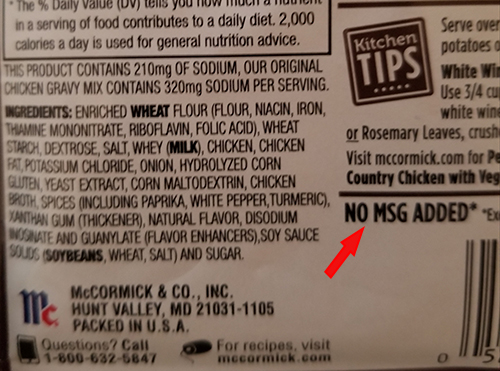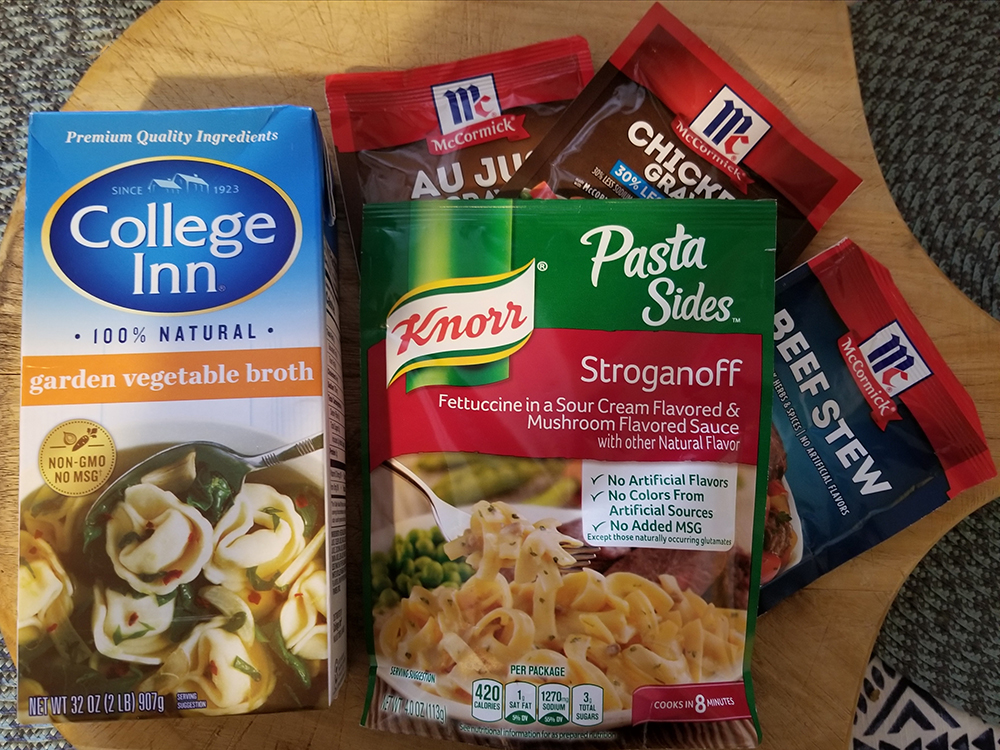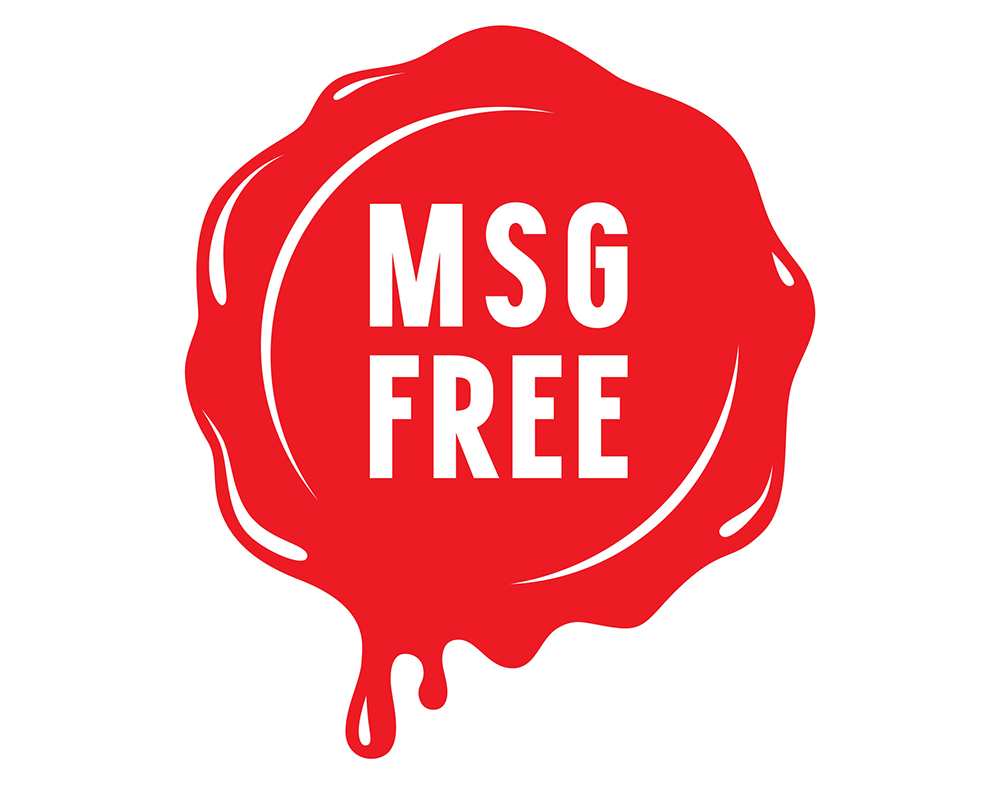As more consumers become aware of the toxic effects of free glutamate Big Food is becoming even more devious
In 2015 a class action lawsuit called Dennis Peterson v. CJ Foods (or as it was more casually known, the “Annie Chun’s No MSG settlement”), reached a conclusion. CJ America Inc. ponied up $1.5 million to pay consumers who had purchased the deviously labeled “No MSG added” Annie Chun’s soup products up to $15 bucks each.
While the case was mentioned online and in some media, it seems the details got lost in translation. It was sometimes referred to as a “rebate,” or simply a chance to pocket a few dollars if you had purchased Annie Chun’s soups.
But what this case really involves is one of the most popular ongoing industry scams, one known as the “clean label.”
In the Annie Chun’s case, the company put glowing ad copy on the front label, saying: “NO MSG added” when, in fact, it contained numerous sources of manufactured free glutamate (MfG), including yeast extract, natural flavors, and soy sauce. Peterson’s complaint called that a way to “deceptively hide ‘MSG’ in food labels.”
Although CJ Foods settled the case relatively quickly (and while it didn’t admit to any wrongdoing, and apparently has since refrained from posting “No MSG” on its products), that trickery is against FDA regulations yet still alive and well, being used by numerous companies to clean up the words on their packaging so as to snag the conscientious consumer.
It’s more, however, than just a “deception.” Over 25 years ago the FDA issued this statement:
“While technically MSG is only one of several forms of free glutamate used in foods, consumers frequently use the term MSG to mean all free glutamate. For this reason, FDA considers foods whose labels say “No MSG” or “No added MSG” to be misleading if the food contains ingredients that are sources of free glutamates, such as hydrolyzed protein.”
Had the case not been settled out of court it is conceivable that the company would have been deemed in violation of the Federal Food, Drug and Cosmetic Act. But that possibility doesn’t seem to bother Big Food a whole lot. Currently there are plenty of products that say “No added MSG” but contain ingredients that are sources of free glutamates.
For example, we just purchased:
Knorr (Unilever) Pasta Sides: Despite the promise of “No Added MSG” on the package front, the product contains a boatload of free glutamates, such as hydrolyzed soy protein, yeast extract and natural flavors. Knorr also adds disodium guanylate and disodium inosinate, two ingredients that work synergistically with MSG and will tip you off as to its presence.

McCormick “flavor” packets: Each one we looked at claimed “No MSG Added” while loaded with a variety of ingredients containing free glutamates. The beef stew seasoning mix included soy protein and hydrolyzed corn gluten, with the Au Jus gravy packet containing hydrolyzed corn gluten, soy protein and sodium caseinate. The chicken gravy mix (pictured above) contained glutamates galore, including hydrolyzed corn gluten, yeast extract, natural flavors, soy sauce solids and disodium guanylate and disodium inosinate (which are listed as “flavor enhancers”).
College Inn (Del Monte) broths: We selected “garden vegetable,” but other types also claim “NO MSG” as well while clearly containing yeast extract and natural flavors.
Over the years litigation has attempted to stop this kind of hoax, but it’s obvious that filling processed foods with flavor-enhancing MfG is so important, so vital to industry, that it will take any chance necessary to keep the labels “clean” and the additives flowing.
ConAgra foods, for example, when legally challenged in 2014 for labeling “No MSG” on its Chef Boyardee Mac & Cheese products (when they contained free-glutamate ingredients), complained that the FDA did not give food manufacturers “fair notice” of such labeling requirements.
Well, the time for fair notice has long expired, and yet food manufacturers continue to not only mislead consumers with their packaging, but with their comments as well.
We called College Inn, Knorr and McCormick consumer information lines and were told the following:
College Inn claims it had a “campaign” to remove MSG from its products back in 2007, when they were reformulated. “MSG can’t be hidden or called something else,” they said.
McCormick has a recorded announcement saying how they “are aware of allergies and sensitivities” to various ingredients, including wheat, milk, nuts and MSG. The recording promised that such ingredients will always be declared “on our labels,” and “never hidden.”
The Knorr agent told us that they don’t have information saying MSG “is not safe,” but “additional studies are being conducted by health officials.” Oh, and that MSG isn’t used in any Knorr products.
Clearly, as more and more consumers are becoming enlightened as to the toxic nature of MSG and MfG, Big Food has chosen to become more and more deceitful. The only way to really know what you’re eating when consuming processed foods is to read the ingredient label – not the package advertising, not the nutrition facts label, but the list of actual ingredients that make up the product.
We took our questions and the falsehoods we were told to each brand’s media department for an “official” reply. When they respond we’ll update you on this evolving story.
The bottom line is that if a product states it has “No MSG,” or “No Added MSG” but it contains ingredients that contain MfG (or “free glutamates”) it is considered “false and misleading” according to the FDA, and in violation of FDA rules.
Stay tuned.
(MfG is the potentially excitotoxic manufactured free glutamic acid found in MSG and a host of other ingredients capable of triggering what are known as MSG reactions.)
If you have questions or comments, we’d love to hear from you. If you have hints for others on how to avoid exposure to MfG, send them along, too, and we’ll put them up on Facebook. Or you can reach us at questionsaboutmsg@gmail.com and follow us on Twitter @truthlabeling.










